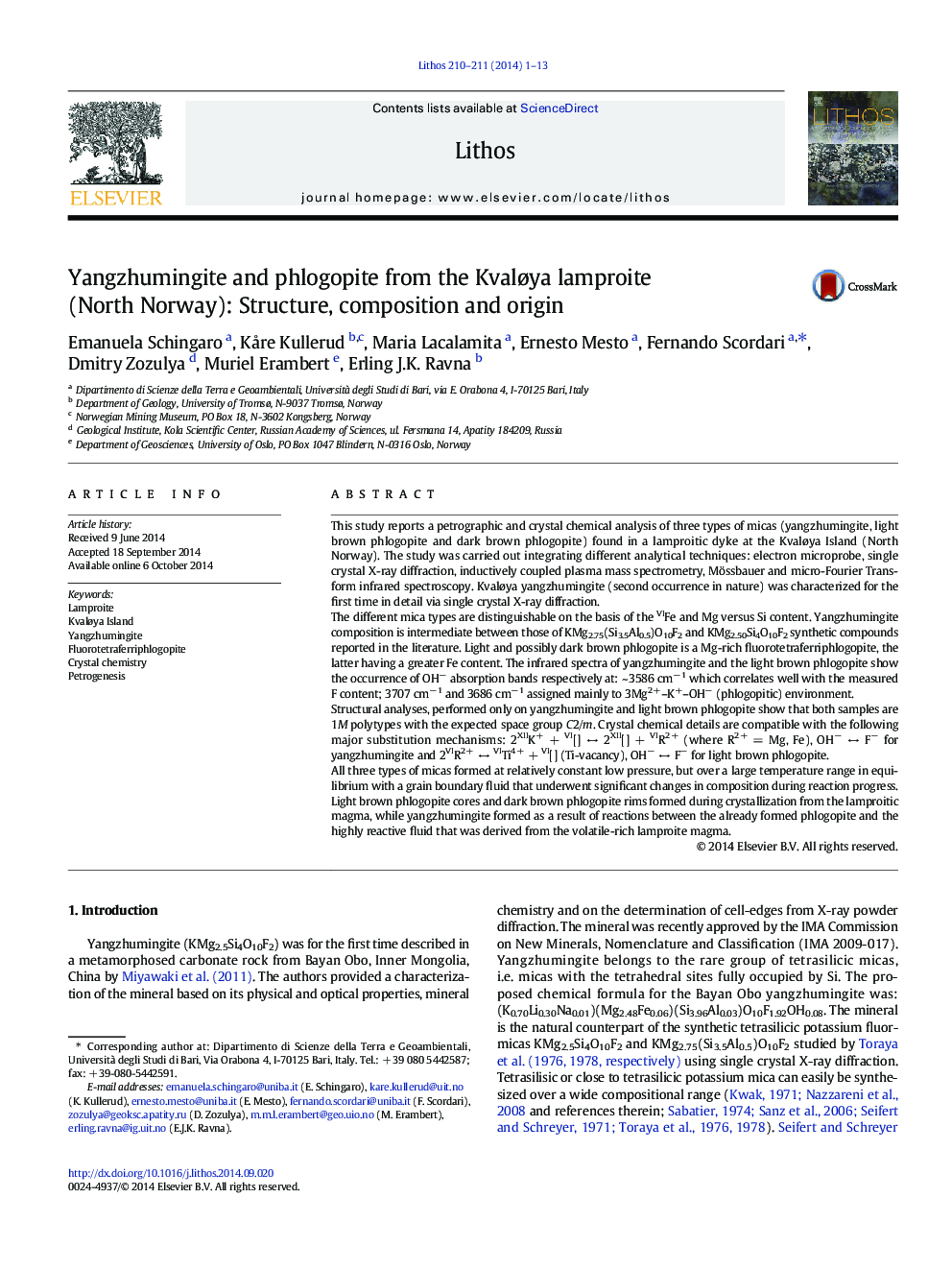| کد مقاله | کد نشریه | سال انتشار | مقاله انگلیسی | نسخه تمام متن |
|---|---|---|---|---|
| 4715761 | 1638670 | 2014 | 13 صفحه PDF | دانلود رایگان |

• Petrographic and crystal chemical investigation on micas from Kvaløya lamproite
• First single crystal yangzhumingite structure determination
• Mica crystal chemistry related to host rock geologic environments
This study reports a petrographic and crystal chemical analysis of three types of micas (yangzhumingite, light brown phlogopite and dark brown phlogopite) found in a lamproitic dyke at the Kvaløya Island (North Norway). The study was carried out integrating different analytical techniques: electron microprobe, single crystal X-ray diffraction, inductively coupled plasma mass spectrometry, Mössbauer and micro-Fourier Transform infrared spectroscopy. Kvaløya yangzhumingite (second occurrence in nature) was characterized for the first time in detail via single crystal X-ray diffraction.The different mica types are distinguishable on the basis of the VIFe and Mg versus Si content. Yangzhumingite composition is intermediate between those of KMg2.75(Si3.5Al0.5)O10F2 and KMg2.50Si4O10F2 synthetic compounds reported in the literature. Light and possibly dark brown phlogopite is a Mg-rich fluorotetraferriphlogopite, the latter having a greater Fe content. The infrared spectra of yangzhumingite and the light brown phlogopite show the occurrence of OH− absorption bands respectively at: ~ 3586 cm− 1 which correlates well with the measured F content; 3707 cm− 1 and 3686 cm− 1 assigned mainly to 3Mg2 +–K+–OH− (phlogopitic) environment.Structural analyses, performed only on yangzhumingite and light brown phlogopite show that both samples are 1M polytypes with the expected space group C2/m. Crystal chemical details are compatible with the following major substitution mechanisms: 2XIIK+ + VI[] ↔ 2XII[] + VIR2 + (where R2 + = Mg, Fe), OH− ↔ F− for yangzhumingite and 2VIR2 + ↔ VITi4 + + VI[] (Ti-vacancy), OH− ↔ F− for light brown phlogopite.All three types of micas formed at relatively constant low pressure, but over a large temperature range in equilibrium with a grain boundary fluid that underwent significant changes in composition during reaction progress. Light brown phlogopite cores and dark brown phlogopite rims formed during crystallization from the lamproitic magma, while yangzhumingite formed as a result of reactions between the already formed phlogopite and the highly reactive fluid that was derived from the volatile-rich lamproite magma.
Journal: Lithos - Volumes 210–211, December 2014, Pages 1–13